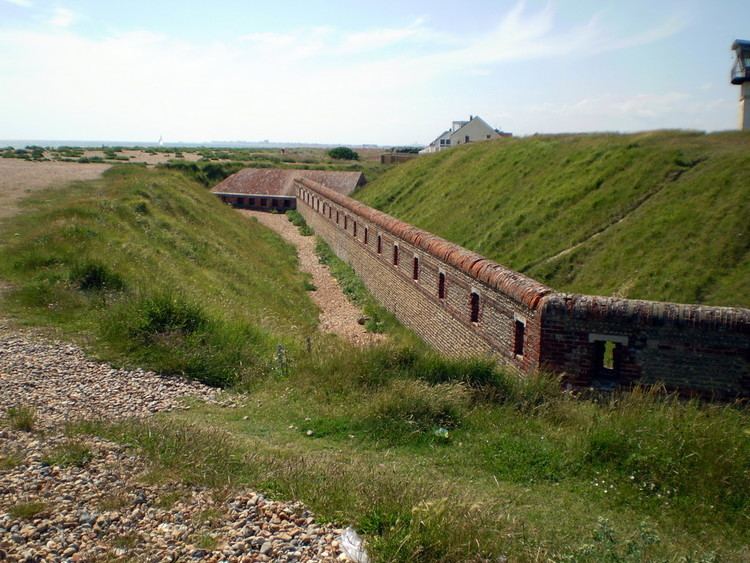Phone +44 7787 994815 | ||
 | ||
Hours Open today · 9AM–5PMSunday9AM–5PMMonday9AM–5PMTuesday9AM–5PMWednesday9AM–5PMThursday9AM–5PMFriday9AM–5PMSaturday9AM–5PMSuggest an edit Similar Marlipins Museum, Shoreham Harbour Lifeboat, Littlehampton Redoubt, Southwick railway station, Portslade railway station | ||
A tour of newhaven fort s sercet bits shoreham fort
Shoreham Redoubt (often referred to as Shoreham Fort) is a defensive structure at the entrance to Shoreham harbour, at the mouth of the River Adur in West Sussex, England. It was planned in the 1850s during a period of political alarm about a possible French invasion, exacerbated by the belief that the Royal Navy was no longer capable of deterring the French following the introduction of iron built, steam powered battleships by the French navy. Construction of the fort was completed in June 1857 at a cost of £11,685. The design is similar to that of Littlehampton Fort, which had been built in 1854.
Contents
Description
The fort consisted of a gun platform 15 ft (4.6m) above sea level and was in the shape of a lunette, that is a straight sided crescent. The gun platform and ramparts were surrounded by a ditch, with a Carnot wall running along its centre, designed to halt attackers attempting to cross the ditch. The wall itself had loopholes for defenders to fire through. Instead of the open bastions at the Littlehampton fort, Shoreham had a caponnier with a brick roof at each of the three angles of the walls. This meant that riflemen could fire along the walls at besiegers in the ditch. The central caponnier straddled the ditch and was connected to the fort by a tunnel under the gun platform and ramparts. The East and West caponniers doubled as latrines. A barrack block at the rear had room for 38 men. The fort was armed with six 68-pounder guns on traversing platforms.
Later History
The fort was garrisoned by the 1st Sussex Volunteer Artillery, who were considered to be one of the top volunteer artillery units and won a prize for the accuracy of their shooting in 1865.
A military review in 1873 found that its armaments were now obsolete and its construction inadequate. The fort was also considered to be too vulnerable to attack from the land. It was recommended that a new, stronger and more defensible fort be built on a site nearby but this was never done. By 1886, the original armament had been replaced by two 80 pounders and three 64 pounder guns.
In the early twentieth century the fort served as an open-air film studio for early silent movies, with four films made there in 1914.
During World War II the fort became part of an Emergency Coastal Battery with searchlights and two 6-inch guns, which were in a newly built emplacement nearby on the beach. After the war, the fort's barrack block was demolished and a coastguard tower built on the gun platform. A restoration was undertaken by West Sussex County Council during 1977 and 1978.
The site today
Today the gun platform, ditch, Carnot wall and caponniers can be viewed in their restored state. The foundations of parts of the original barrack block and parade ground can be made out. Outside the fort to the East is an observation tower, now operated by volunteers from the National Coastwatch Institution and used to watch the harbour entrance and sea approaches.
The Redoubt is currently being further restored by a local group of volunteers, the Friends of Shoreham Fort, the aim being to restore it and create a museum based in the ammunition store beneath the site of the former Coastguard tower.
In March/April 2014, an old nissen hut was rebuilt on the site on one of the old nissen hut bases. The hut will be primarily used as an education centre for the Friends of Shoreham Fort as well as a display space. The nissen hut was dismantled in late 2013 near Chichester after two old land girls living there since World War II had died. The hut was then transferred to the site of Shoreham Fort and rebuilt.
